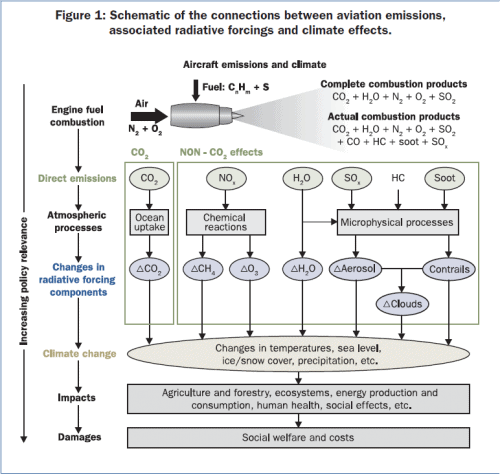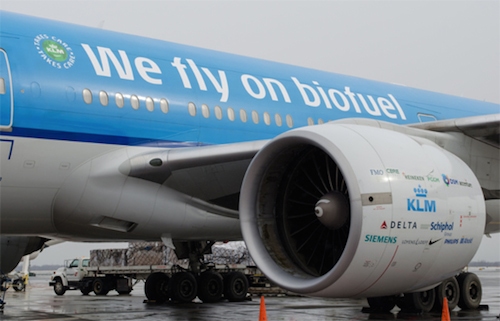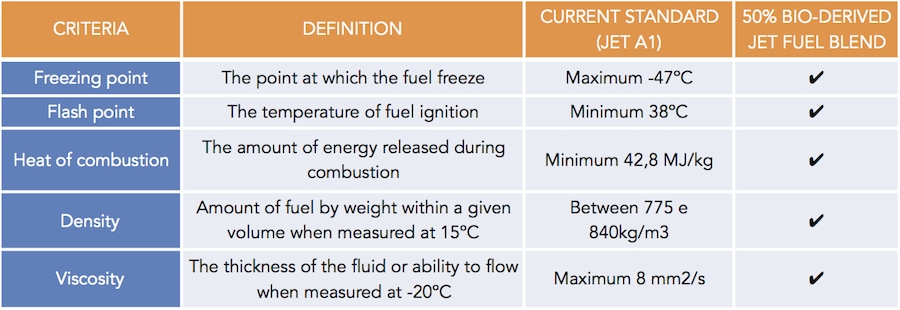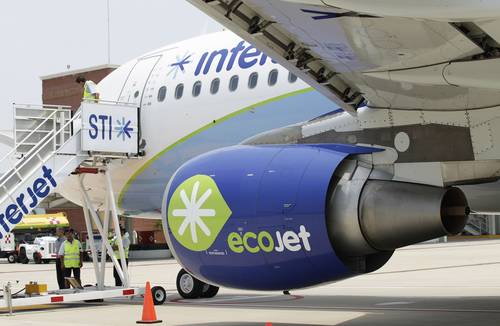It is a pleasure to welcome the first external collaborator of aeriaa.com Rui Carapeto, economist, university professor and independent consultant. He is also an Ultralight aircraft pilot. As Rui, if you want to send us articles related to aviation’s technologies, please send them to info [at] aeriaa.com.
Environmental issues have become a major topic of concern to the commercial aviation industry. Aviation is a global industry with global issues and challenges that require global solutions. The International Air Transport Association (IATA) estimates that commercial aviation will grow by 5% per year up to 2030, exceeding the expected efficiency gains in fuel consumption and operation of aircraft in approximately 3%. This means an increased growth of the carbon emissions resulting from the fuel consumption in aviation over the next two decades.
The increasing air traffic and fuel costs combined with the pressure to reduce CO2 emissions, for which the sector currently contributes with 2-3 % of total global emissions, puts the industry under considerable pressure. IATA is committed to ensuring that the commercial aviation industry will reach a neutral rate of growth of carbon emissions by 2020 and a 50% reduction by 2050.
The main goal for the airlines is to find an alternative fuel that is both reliable and cheaper, with scarce negative impact on the environment, which can reduce the volatility of supply and improve its distribution globally.

Aviation Emissions Breakdown. Source: Jatrofuels. http://www.jatrofuels.com/758-0-Aviation+Carbon+Footprint.html
The use of biofuels in commercial aviation is increasingly being seen as one of the best alternatives, in response to current environmental challenges. Consequently, almost all the major airlines, and also military aviation in some countries, are committed to testing and developing biofuels that can be used safely in aviation (Table 1).
Table 1 – Commercial flights with biofuel
Political and legal issues also put constraints to the use of biofuels in commercial aviation sector, so their cost and speed of introduction depends largely on the adoption of governmental policies, such as establishing subsidies for research and production, changes in legislation, certification, etc.
Regarding production technological options, given the high quality required of a fuel in order to be used in commercial aviation (Table 2), the technologies for producing biofuels that do not compete directly with food production are still quite limited, although currently they do not constitute the primary obstacle to its introduction.
Among the various raw mixes available today, the cheapest option are the edible oils, i.e. palm oil and soybean oil, also called first-generation generation biofuels. Nevertheless, given the potential implications on food production, with particular emphasis on the impact in land use, this alternative should be disregarded in favor of non-edible oils, also called second-generation biofuels. Consequently there has been a refocusing of attention on non-edible oils such as: algae, jatropha, camelina, samphire, etc. However, although these oilseed crops can offer considerable potential for the production of biofuels, it is anticipated that these will only be economically viable in the long-term.
Considerable research advances are still needed in order to develop and successfully demonstrate the feasibility of converting the technologies associated with these raw materials.
View Biofuels case studies in a larger map Source: www.enviro.aero/sustainablebiofuels.aspx
An emerging alternative for biofuel production is the use of biomass, although it is still too early to conclude whether this option is a viable alternative, both economically and technically.
It is expected that biomass will play a decisive role in responding to the growing demand for fuel in the aviation industry, which only stresses the need to develop an international standard for the quality of raw materials, as a precondition to support the logistics of distribution at international level and the establishment of an efficient and “environmentally friendly” biofuel.
However, the current price of biofuels is at least twice the price of traditional fuel, and it is still only available in the market in small quantities.
To be viable in the long-term, the fuel would have to be environmentally and economically sustainable. The demand for sustainability is the first step towards sustainable biofuel production, although it is still necessary to undertake a more comprehensive review in particular at the level of indirect environment impacts, i.e. impacts caused indirectly by a change in land use, as well as social aspects caused by this change.
There are still many uncertainties to be dealt with and challenges to be addressed before biofuels can be used in aviation at a large-scale. Significant advances are needed in the production and distribution of raw materials, as well as in their conversion process into biofuel.
The aviation industry is committed to developing alternatives to the fuel that is currently being used. Aspects such as reliability of supply, environmental and political issues, among others, are critical and instrumental to meeting this challenge.
Author: Rui Carapeto.
Please address any questions or comments you may have on this article to:
ruicarapeto@altair.pt
Images, videos, maps and below links are not originally put by the author in the article, aeriaa.com put them so as to illustrate the article.
For more info:
Enviro.aero: www.enviro.aero/default.aspx
Lufthansa Biofuel: www.lufthansagroup.com/en/themen/biofuel.html
KLM Biofuel: www.klm.com/csr/en/climate/footprint/biofuels/index.html
KLM and SkyNRG Programme: skynrg.com/klmcorporatebiofuelprogramme/#track-record
SkyNRG How it works: skynrg.com/how-it-works/
Jatropha Biofuel producer: www.jatrofuels.com/
Jatropha WIKI: en.wikipedia.org/wiki/Jatropha_curcas








